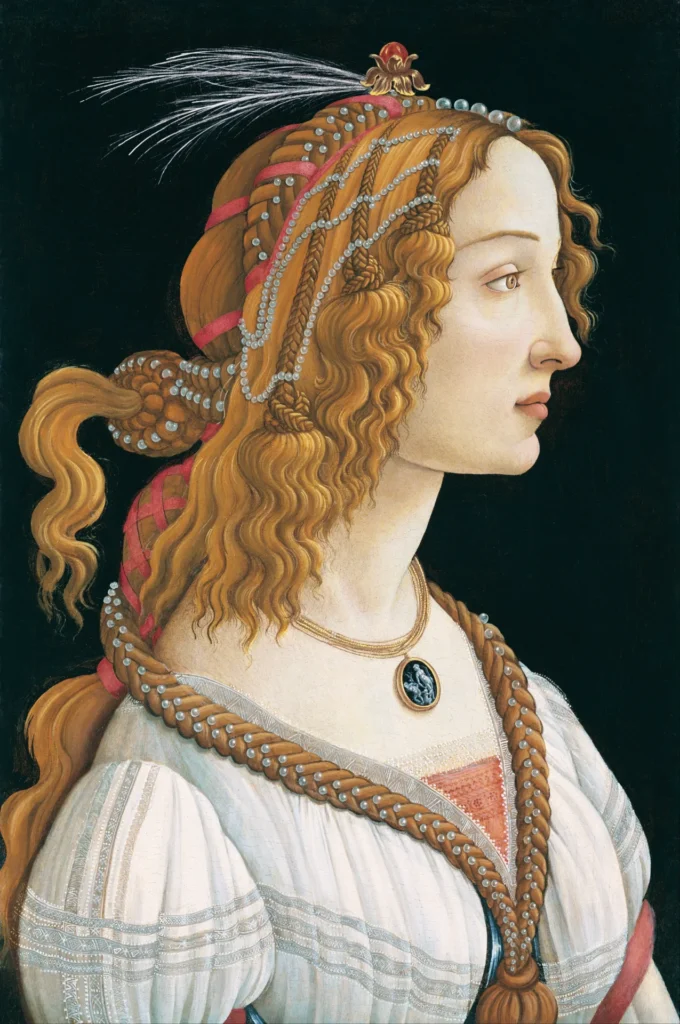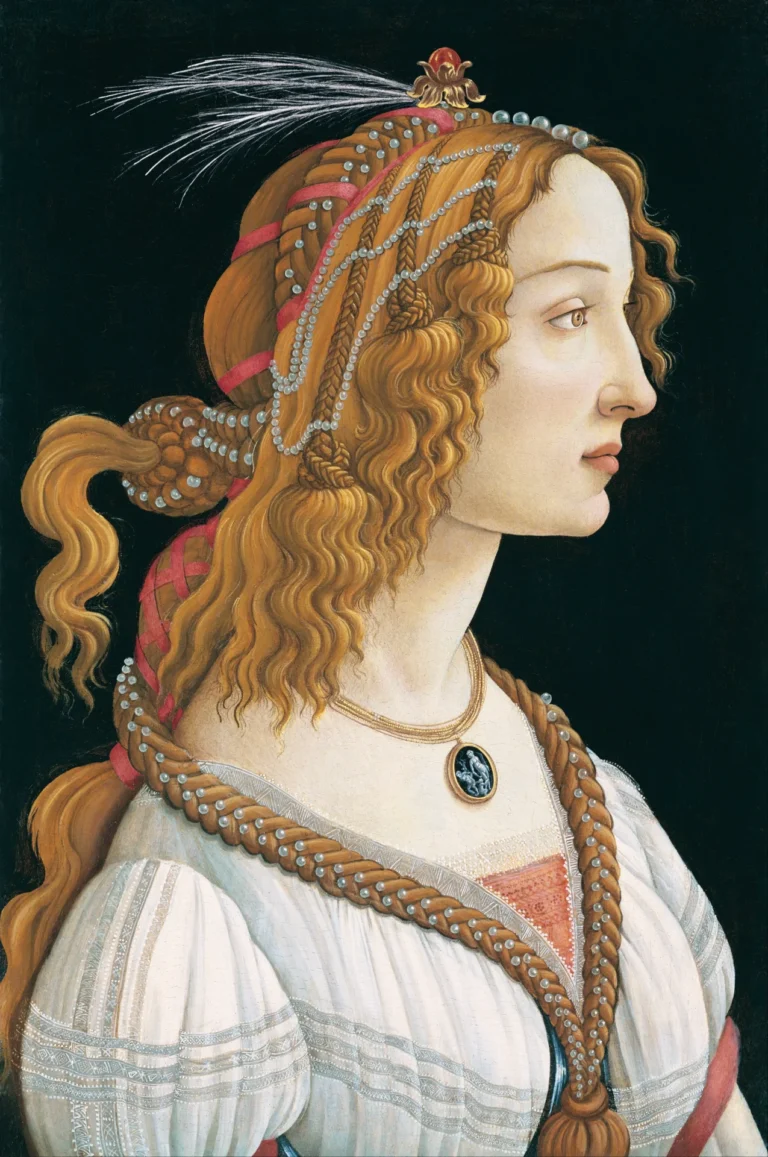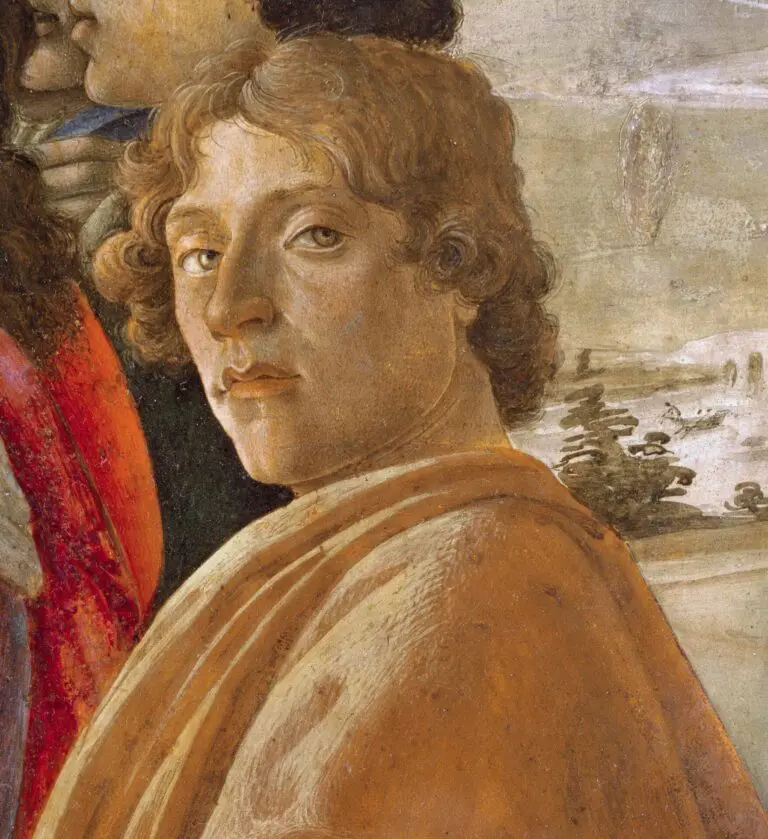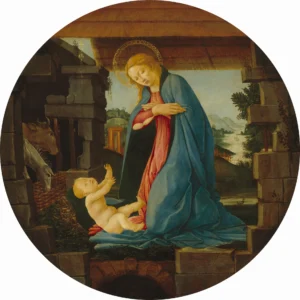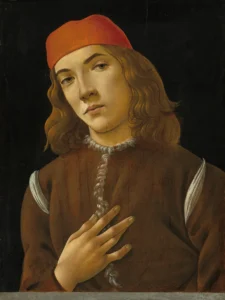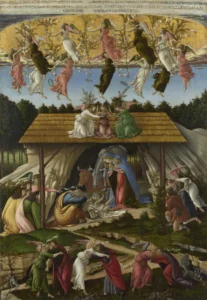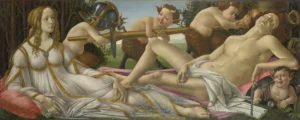Idealized Portrait of a Lady (1480)
This enchanting portrait, believed to depict the renowned beauty Simonetta Vespucci, is executed in tempera on poplar wood. The lady is portrayed in a three-quarter view, adorned with a cameo medallion and intricate hairstyle, symbolizing the elevated status women were given in Renaissance art. While its subject matter revolves around beauty and idealization, the work also reflects Botticelli’s connection to the Medici family and the shift in Florentine artistic themes towards classical influences.
1480 - 1485
About the Artwork
The painting, crafted by the illustrious Sandro Botticelli, reflects the spirit of the Italian Renaissance, an era characterized by the rediscovery of classical philosophies and aesthetics. Although the subject is widely believed to be Simonetta Vespucci, a celebrated figure in Florentine society, the identity remains a subject of scholarly debate, with connections to several prominent women of the Medici circle. Botticelli's unique approach, steering away from religious themes in favor of idealized beauty, showcases a cultural shift towards humanism, making the work a significant piece in understanding the evolution of portraiture during this transformative period in art history.
Did You Know
Liked what you see? Add it to your collection.
Enjoyed reading? Share it.
... continued
Creation and Date
The painting is believed to have been created between 1480 and 1485, although some sources narrow the date to between 1475 and 1480.
Subject and Identity
The subject of the painting is widely thought to be Simonetta Vespucci, a renowned beauty of 15th-century Florence and the mistress of Giuliano de' Medici. However, this identification is not universally accepted, and some scholars suggest other possible subjects, such as Clarice Orsini, the wife of Lorenzo de' Medici.
Artistic Style and Details
The painting is executed in tempera on a wood panel, specifically poplar wood in one of the versions. The woman is depicted in a bust-length profile, with her torso turned in a three-quarter view to show a cameo medallion around her neck. This medallion is a copy in reverse of 'Nero's Seal,' which features Apollo and Marsyas and was owned by Lorenzo de' Medici.
Idealization and Symbolism
The portrait is highly idealized, reflecting the Renaissance practice of depicting women in an elevated, often mythological or goddess-like manner. The intricate hairstyle, adorned with pearls and black ribbons, and the elaborate dress with fine details, all contribute to this idealized portrayal. The hairstyle, in particular, is noted for its erotic and symbolic elements, such as the braids and loose hair, which were unconventional for a married woman at the time.
Provenance and Current Location
One version of the Idealized Portrait of a Lady is housed in the Gemäldegalerie, Berlin, while another is located in the Städel Museum in Frankfurt, Germany.
Historical Context and Significance
Botticelli worked under the patronage of the Medici family, and this painting reflects his departure from traditional religious themes, instead focusing on classical and mythological subjects. The painting is part of a genre of idealized portraiture common among Florentine artists during the 1460s and 1470s. It gained significant recognition in the late 19th century and is now considered one of the exemplary works of the Italian Renaissance.
Authorship
While the painting is generally attributed to Sandro Botticelli, some authorities suggest that it might have been created by Jacopo da Sellaio, another artist from Botticelli's workshop.




